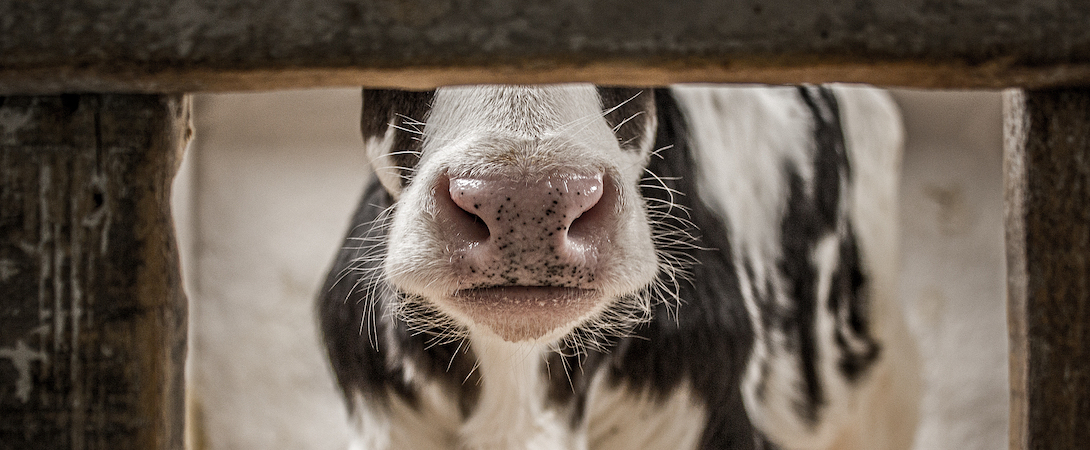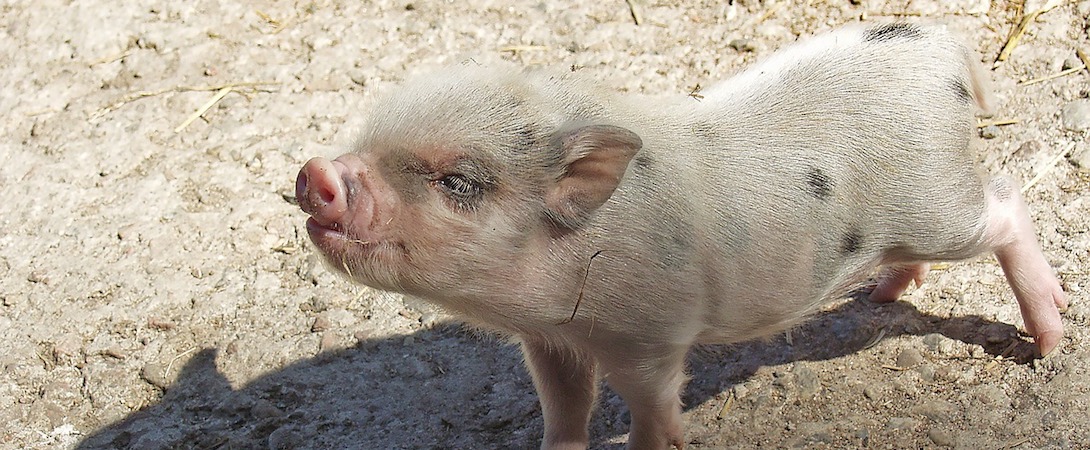Animal Agriculture Is The Missing Piece In Climate Change Media Coverage
Background
For many years now, climate researchers have been warning that the world can’t meet its Paris Agreement climate goals of limiting global warming to 1.5°C without reducing meat consumption. Multiple studies have affirmed that between 11.1 and 19.6% of global emissions come from meat and dairy production, and leading global food and climate agencies are also in agreement, recommending that people, particularly those in the Global North, reduce meat consumption in favor of a plant-rich diet.
The effects of animal agriculture on the environment and climate are vast: It is a leading cause of deforestation, it’s responsible for significant biodiversity loss and pollution, and emits large amounts of greenhouse gases, particularly methane. Methane alone is the cause of over 25% of global warming, for which reason reducing methane emissions is critical. If emissions continue as they are now, the food sector alone is enough to push global warming past that 1.5°C limit, while just reducing meat consumption could get the world much closer to our emissions goal. In the United States, this reduction would mean that the average person would consume about 70% fewer animal products on a daily basis, with the greatest reductions coming from red meat and chicken—92% less red meat and 81% less chicken, according to EAT-Lancet Commission recommendations.
Despite the extensive research supporting the reduction of animal product consumption, there’s long been a disconnect between what the research shows and what the public understands. According to a recent consumer study conducted by Purdue researchers: “The belief that ‘eating less meat is better for the environment,’ which is strongly supported by many climate and environmental researchers, is at an all-time low” (Lusk & Polzin, 2023). The reason for this disconnect is multifaceted, but at least one factor is the information the public receives regarding the connection between animal agriculture and climate change.
Given the role of the media in informing the public about important issues like climate change, this partner project between Faunalytics and Sentient Media sought to understand how the media communicates the environmental implications of animal agriculture to readers. By analyzing recent climate articles from top U.S. media outlets, we drilled down on how often the media makes the connection between animal agriculture and climate change when reporting on climate issues, and how reporting on animal agriculture in relation to climate change misses the mark.
Key Findings
- Only 7% of climate articles mentioned animal agriculture and they rarely discussed its impact on climate change. Across the 1,000 articles we examined, only a handful of stories reported in depth on the connection between consuming animal products and climate change. Most articles that mentioned animal agriculture failed to discuss the emissions and environmental degradation caused by the industry, let alone the importance of reducing meat consumption or switching to a plant-based diet to fight climate change. When diets were discussed, the effectiveness of plant-based diets was sometimes downplayed or, more often than not, presented almost as an afterthought rather than a legitimate strategy to mitigate climate change.
- The animal agriculture industry is often portrayed as a victim of climate change rather than a significant cause. Our qualitative analysis revealed that instead of citing animal agriculture’s negative environmental impact, climate articles that discussed the industry in any depth generally focused on how climate change is impacting animal agriculture. Multiple articles discussed how flooding, drought, and heatwaves have caused livestock losses both in the U.S. and abroad, and how this affects the livelihoods of farmers, while failing to mention the role that the animal agriculture industry plays in the climate crisis.
- There are countless missed opportunities to discuss animal agriculture in the context of climate change. Energy, transportation, emissions, and fossil fuels were given the spotlight in climate coverage: These topics were mentioned in up to 68% of climate articles but were rarely tied to animal agriculture, despite the connections and parallels between them. For instance, transportation is responsible for roughly the same amount of emissions as the animal agriculture industry and is part of that industry, yet just 8% of climate articles mentioning transportation also referenced animal agriculture.
- Impactful subsectors of animal agriculture are also not given enough attention by the media. Cattle farming is responsible for about 62% of animal agriculture emissions (FAO, 2022), yet cows were mentioned in just 30% of animal agriculture articles. Similarly, methane came up in 22% of animal agriculture articles despite accounting for 54% of the sector’s emissions.
Recommendations
For Journalists
Lead with the consensus of scientific evidence. Whether it’s reporting on what drives food sector emissions or by what percent feed additives can reduce methane, climate reporting should identify areas of consensus as well as points of disagreement in the field. Because the food-climate beat is a rather narrow one, the media industry needs to create and follow more accurate reporting guides for this coverage area. Sentient Media has developed a tip guide here: Food and Farming Reporting Guide.
Every story is a climate story—look for opportunities to expand coverage. Whether your role is reporting on the Farm Bill or writing new recipes, all food and farming stories are an opportunity to inform readers about how what we eat drives climate change. At the same time, climate journalists can add reporting on food-related emissions to their coverage, like the Inflation Reduction Act or deforestation in the Amazon.
Show readers the connection between what we eat and climate emergencies. Many climate stories are covering climate as a crisis by reporting on emergencies like drought, flooding, and deforestation. But the deforestation and drought that harms animals are also driven by what we eat. Stories about harm to animals or costs to farmers are also an opportunity to make the connection to our own behavior and steps that we can take to make an impact.
Avoid framing the issues in a way that pits one sector against another. Whether we should worry more about cattle ranches or air travel is a distraction. Climate researchers agree that we need to be reducing emissions from all sectors.
Treat food and farming like a science. Whether you are reporting on how a farm is implementing a climate-smart agriculture grant or looking into new alternative proteins, carefully check facts and be wary of results that seem too good to be true. The best ways to develop scientific literacy in this area are to speak with a wide range of scientists in different disciplines, keep up with the latest research, and take note of funding disclosures.
For Animal And Climate Advocates
Interact with climate stories that get it right. Show news outlets the climate topics you care about and want to see more of by sharing the article on social media, posting a positive comment, or even reaching out to the news outlet to tell them. News outlets want you to engage with their stories and will publish ones that are likely to get more traction, so show them that reporting on animal agriculture in climate stories is of interest to you and other readers.
Share your knowledge and opinions by writing a letter to the editor or an op-ed. If a news outlet has recently published a climate piece that you have strong feelings about—in support or disagreement—writing a letter to the editor may be an effective way to convey your feedback. If you’re a strong writer and have a lot to say, you can submit an op-ed (opinion editorial or article). This is a great opportunity to (politely) correct misconceptions, cite better sources, and call for action—encourage readers to reduce their meat consumption or to fight for more funding to go toward plant-based agriculture rather than subsidizing animal agriculture.
Tip-off news outlets about interesting discussions that are happening around the role of animal agriculture in climate change. If an interesting study about animal agriculture’s implications for climate change is getting some buzz in the scientific or animal advocacy communities, you can tag a news outlet on social media or reach out to see if they’ll pick up the story. Look for an email or phone number to contact them with tips — ideally, reach out to a reporter or the editor of their climate or science section if they have one. Make sure to prepare a convincing pitch, showing that you have newsworthy information.
Join forces with other advocates or organizations to interact with the news on social media. Remember, there is strength in numbers. Form a group of advocates to like and comment on good stories or reach out to news outlets to cover the issue of animal agriculture more extensively in climate stories. If you’re a climate expert, consider writing an op-ed with other experts in your field to make a bigger statement. With more people showing interest in how animal agriculture impacts the climate, news outlets may be more likely to include this issue in their climate coverage.
Use your own platform to educate the public on the animal agriculture industry’s contributions to climate change. According to Faunalytics (2023), having climate concerns can make a big difference in people’s openness to pro-animal actions, such as supporting Meatless Mondays. As a result, if you’re an animal advocate, incorporate an environmental perspective into your advocacy efforts. For example, use your diet campaign to tell people how reducing their meat consumption can have a positive impact on the climate, or let politicians and decision-makers know that animal agriculture is a leading cause of deforestation and food sector emissions when you lobby for farmed animals.
Supplemental Infographic
Applying These Findings
We understand that reports like this have a lot of information to consider and that acting on research can be challenging. Faunalytics is happy to offer pro bono support to advocates and nonprofit organizations who would like guidance applying these findings to their own work. Please visit our Office Hours or contact us for support.
If you’re a journalist looking to cover the food-climate intersection, remember to check out Sentient Media’s Food and Farming Reporting Guide for tips.
Behind The Project
Research Team
The project’s lead authors were Constanza Arévalo (Faunalytics) for the quantitative analyses and Jenny Splitter (Sentient Media) for the qualitative findings. Dr. Jo Anderson (Faunalytics) reviewed and oversaw the work.
Acknowledgements
We would like to thank Ana Bradley, Executive Director of Sentient Media, who provided valuable input about this research throughout the process. We would also like to thank an anonymous funder for their generous support of this research.
Finally, we are very grateful to all the climate journalists who are already putting in the effort to report on animal agriculture’s impact on climate change and the ways we can all help mitigate this critical issue.
Research Terminology
At Faunalytics, we strive to make research accessible to everyone. We avoid jargon and technical terminology as much as possible in our reports. If you do encounter an unfamiliar term or phrase, check out the Faunalytics Glossary for user-friendly definitions and examples.
Research Ethics Statement
As with all of Faunalytics’ original research, this study was conducted according to the standards outlined in our Research Ethics and Data Handling Policy.
Citations:
Arévalo, C., Splitter, J., & Anderson, J. (2023). Animal Agriculture Is The Missing Piece In Climate Change Media Coverage. Faunalytics. https://faunalytics.org/animal-ag-in-climate-media/















